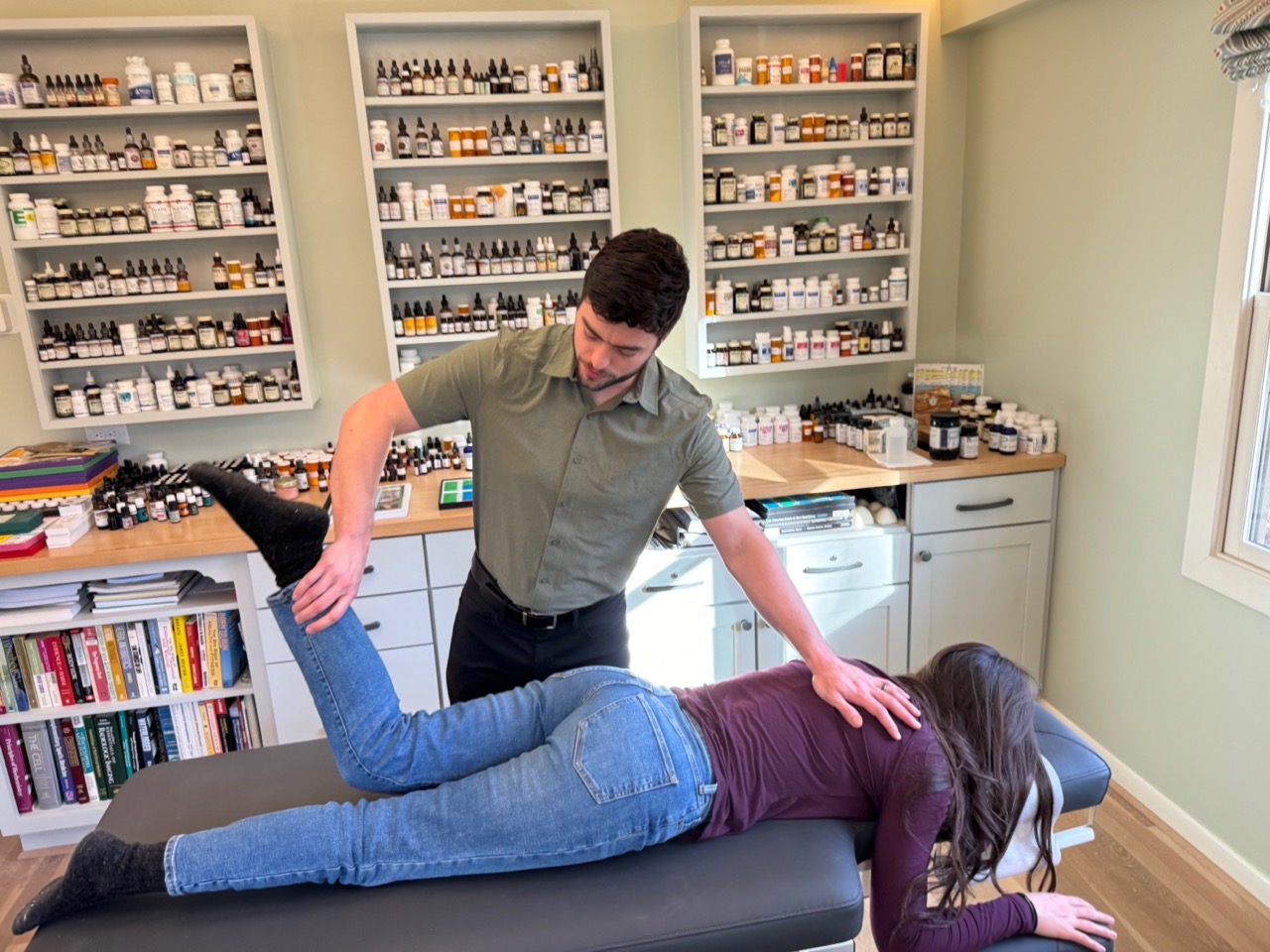One of the main techniques I use is called Applied Kinesiology or AK. AK is a diagnostic technique that follows the understanding that the body is highly interconnected with all its systems and creates well-being through the balance of structural, chemical, and mental health. This concept of the triad of health sees that these 3 aspects of health cannot be detached from each other and effects on one side of the triangle affect the other 2 sides. This is not a new concept to chiropractic as the founder of chiropractic D.D. Palmer often taught the 3 T’s (thoughts, traumas, and toxins) were the cause of dis-ease.
Applied Kinesiologists, at least in the United States are typically chiropractors, but any healthcare professional can use this technique. In Eastern countries, it is commonly used by, medical doctors, dentists, acupuncturists, and even psychiatrists.
So, what is it? Applied Kinesiology uses a neurological type of muscle testing to assess all aspects of the triad of health to gain biofeedback from the patient about what isn’t working as well in their body, and what will help to correct this. Muscle testing is not a maximum strength test as it tests your neurologic control of that muscle and your body’s ability to respond to a changing force. This gives the Applied Kinesiologist what many deem, “a window into the patient’s nervous system”. The practitioner will assess various reflexes in the body, such as acupuncture points, organ reflexes, gait response, etc… and determine what is a normal or abnormal response. This allows the doctor to determine what facilitates (strengthens) a “weak” muscle or what inhibits (weakens) a “strong” muscle. The terms weak and strong aren’t an entirely accurate way to describe the tests, but this is easier to understand without having any neurobiology knowledge. The tester can then utilize what is known as a “challenge” to find what will correct the abnormal response and thus help improve the patient’s health. Treatments could include chiropractic adjustments, cranial therapy, myofascial therapy, trigger points, acupuncture or acupressure points, nutrient supplementation, or exercise recommendations. Muscle testing is an art that takes years of practice to perfect. The science is knowing how to apply and interpret the test to determine the best treatment for the patient.
When done well Applied Kinesiology muscle tests are a very accurate, easy, and low-cost way to help your doctor narrow down what process in your body is dysfunctional and what treatment will be necessary. The muscle testing accepted by the International College of Applied Kinesiology (ICAK) are very specific tests, not an arm pull-down test you may see other muscle testers doing. This is a less accurate way of testing and may or may not deliver the same results. Applied Kinesiology should also be used alongside other diagnostic tools and evaluation, such as, a thorough history, physical exams, orthopedic and neurologic tests, and lab testing as necessary to gain a full understating of the patient’s condition. This type of testing allows for a very individualized approach for every patient, as many times 2 people with the same symptoms will need 2 completely different treatment protocols.

